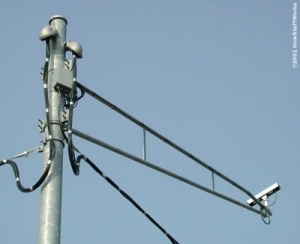Sep 15 2010
Several operative video cameras have been installed at various road junctions of Baton Rouge area, to monitor red light invasions even without police observations. 29 cameras in 18 different junctions were integrated to serve the purpose.
 Non-invasive video sensors
Non-invasive video sensors
The computer will capture two images of the violating cars; the first image will be caught upon reaching the white line and the second one is tracked upon approaching the middle of the intersection which clearly indicates the car’s red light invasion and passing the junction area.
A non-violating video sensing device is installed at the top of the post at the junctions, which gets triggered during red lights. The camera, computer for the major camera and the invisible components all get stimulated and the sensor wires are integrated in the roads as well.
Two series of sensor cables are embedded in each lane just ahead the white lines. The first set informs the computer about the arrival of a car at the intersection point, while the second series of wires notify that the car has further crossed the junction and signals to take pictures of the car. The sensor cable generates the magnetic field and the metal component in the car activates the sensors. Upon sensor stimulation, the computer directly captures the photos which can be exploited against the person violating the rules.